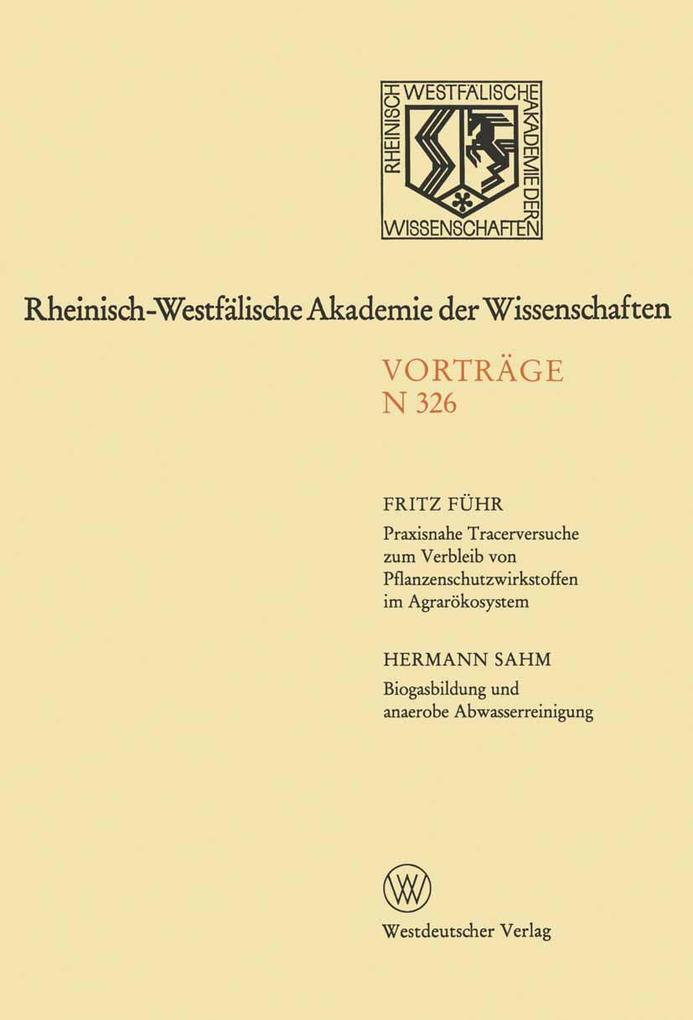According to the FAO's latest estimates, the world food supply can only be guaranteed if the 1982 agricultural production is increased by approx. 50% by the year 2000. Yen 3 of this production increase must be achieved on areas already under cultivation. This means that in addition to balanced mineral fertilization the use of pesticides will have to be intensively continued in order to fully exploit the im proved yield potential of the cultivated plants achieved by breeding. The primary research objective is therefore to extend our knowledge of the uptake and effects of pesticides in the plant as well as their persistence in agricultural ecosystems in order to be able to apply them both more efficiently and more safely. The Institute of Radioagronomy at the Kernforschungsanlage JUlich GmbH QUlich Nuclear Research Centre) is carrying out practical experiments into these problems using 14C-Iabelled pesticides under field conditions. In this way state ments will become possible on the uptake and residue situation in plants, trans location and metabolism in the soil, the balance in the year of application as well as on the uptake of untreated cultures in the crop rotation. Parallel to this, uptake after leaf spraying or after seed grain treatment is being studied under standardized conditions, as well as for example the mineralization, sorption and fixation of active substances and metabolites in the soil. Results from the past 12 years are being utilized as a basis for an evaluation of the state of knowledge.
Inhaltsverzeichnis
Praxisnahe Tracerversuche zum Verbleib von Pflanzenschutzwirkstoffen im Agrarökosystem. - 1. Einleitung. - 2. Pflanzenschutzchemikalien und ihr Einsatz. - 3. Radiokohlenstoff als Leitisotop. - 4. Detailversuche auf der Basis der Freilandergebnisse. - 5. Schlußfolgerung. - Summary. - Resume. - Abbildungen. - Literatur. - Diskussionsbeiträge. - Professor Dr. rer. nat. Rudolf Schulten; Professor Dr. agr. Fritz Führ; Professor Dr. agr. Hermann Kick; Professor Dr. phil. , Dr. rer. techn. , Dr. rer. nat. h. c. Eduard Mückenhausen; Professor Dr. rer. nat. Dietrich Neumann; Professor Dr. rer. nat. Johann Schwartzkopff; Professor Dr. -Ing. Rolf Staufenbiel; Professor Dr. rer. nat. Johannes Willenbrink; Professor Dr. -Ing. Manfred Weck; Professor Dr. phil. Maximilian Steiner; Professor Dr. phil. , Dr. E. h. Joseph Straub; Dr. phil. Helmut Tietz; Dr. rer. nat. Erich Dorn. - Biogasbildung und anaerobe Abwasserreinigung. - Biologie der Methanbildung. - Anaerobe Abwasserreinigungsverfahren. - Abbildungen. - Diskussionsbeiträge. - Professor Dr. agr. Hermann Kick; Professor Dr. rer. nat. Hermann Sahm; Professor Dr. rer. nat. , Dr. h. c. mult. Günther Wilke; Professor Dr. -Ing. Paul Arthur Mäcke; Professor Dr. rer. nat. Werner Schreyer; Professor Dr. phil. Lothar Jaenicke; Professor Dr. rer. pol. , Dres. h. c. Wilhelm Krelle; Professor Dr. -Ing. Manfred Weck; Professor Dr. phil. , Dr. E. h. Joseph Straub; Professor Dr. rer. nat. Wolfgang Priester; Professor Dr. -Ing. Rolf Staufenbiel; Dr. rer. nat. Erich Dorn.
